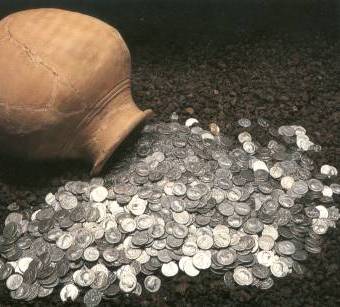How to Save Money on Clothes

How to Save Money on Clothes
*…and why there’s no easy way to do it.
- I can make that myself! (Or so you’d like to believe). Sewing your own clothes is a prime example of this time/money conundrum. On the plus side, most mass-produced clothing is so badly made that no matter how limited your own skills are, chances are good that you can still make a very serviceable garment that will wear better than most of what’s available in the market. As the seamstress, you can (at least in theory) also control the fit, color, and pattern. The down side is that unless you have the 3-D kind of mind a sewer needs, you won’t be making any garments at all or you won’t be making them without a major struggle. Getting the proper fabric can be a hassel–not to mention an end in itself. Sewing at home also requires an investment in tools and equipment, some of which such as sewing machines and cutting tables can be quite expensive. Bottom line: if you are naturally sew-y, go for the gold. If you are craft-y (preferring a glue gun to the needle and thread), just admit it to yourself and get someone else to do your sewing. If you’re not sure where you fall on the sew-it/craft-it continuum, try both out before you commit to anything expensive.
- Hunting the elusive bargain in its natural habitat. Shopping at thrift stores, garage sales, clearance racks, and, in my corner of the world, dumpster transfer stations can net you some bargains–amazing bargains. A friend of mine once got a beautiful embroidered Saudi thobe at a thrift store for $30.00. Thobes normally retail from $100-150 U.S. Another friend once found a brown, cashmere cardigan at the transfer station, still perfectly good. That’s the upside. The downside is that shopping in this manner is a major time sink. For every great find, there are at least a hundred pieces of rubbish. To be this kind of bargain shopper, you need to have immense patience, energy, and a keen understanding of the market. You need to know the true worth of an item in order to know if it’s a bargain or not. If you’ve got kids, second hand clothes are the way to go. Children outgrow their clothes so quickly that you can get a lot of like-new items for very little money. Bottom line: If you don’t enjoy the thrill of the chase, don’t join in the hunt.
- Save money in the long term by buying good, if expensive, clothes. Buying quality and taking care of it is a pricey strategy, but one that can pay off for you over time. The plus side here, particularly when it comes to costume items as opposed to everyday wear, is that you will get a custom-tailored piece that will last many years. This strategy works best with classic pieces in natural fibers (cotton, wool, silk, leather) you can wear several different ways or for several different occasions. The down side, obviously, is that buying quality requires a lot of money up front. Also if you are outside the “average” size range, you may not be able to re-sell your custom-made item when you no longer want it. Bottom line: Be honest with yourself. If you aren’t going to be wearing this thing over and over again for the next ten years, don’t shell out the cash.
- Make do with what you’ve got. No fashion-on-a-budget story these days is complete without some terminally perky expert urging you to “shop your closet”. This strategy works really well if you’re a pack rat. Look in your closet. Do you still have your prom dress from twenty years ago? For cryin’ out loud, get rid of it and while you’re at it, toss out everything else that is too small, too shabby, or is older than your children. If, on the other hand, you look in your closet and what you see is a great, echoing cave, you’ve got problems–the kind only purchases can fix. Embellishing old clothes to give them a new look is another aspect of making do. This can be a lot of fun especially if you have an artistic or crafty bent. Combining several items to make a new one, say cutting up several old T-shirts and resewing them into one, or repurposing an old item of clothing (e.g. turning a skirt into a handbag) are other possibilities. Swapping clothes with friends is a good idea if you have a bunch of friends who are about the same size as you. Bottom line: getting organized is a good idea, but you can’t make a silk purse out of a sow’s ear if you don’t have two sow’s ears to rub together.
http://clothesmonaut.wordpress.com/2009/03/
How to Save Money on Clothes
Comments
Post a Comment
Dear Visitor,
Please feel free to give your comment. Which picture is the best?
Thanks for your comment.